
The Democratization of Neuroscience
André Maia Chagas was working towards his master’s degree in Tübingen, Germany, when he looked around at the stacks of extracellular amplifiers, acquisition boards and behavioral recording devices and realized the combined price tag on his equipment. All told, the equipment for one experiment alone would have cost $70,000.
“I started thinking it was impossible if I ever wanted to do anything like this back in Brazil,” he says. “At the time, I knew there was an open-source software movement, and I thought there must be something we could do in terms of hardware.” With that thought, Chagas launched Open Neuroscience, a platform for sharing ideas and designs for neuroscience-related hardware. Since its start in 2012, contributors have shared more than 160 projects on Open Neuroscience — everything from DIY eye-tracking goggles to a robot that dispenses fly food. Now a research bioengineer at the University of Sussex as well as overseer of Open Neuroscience, Chagas has devoted his career to helping scientists build open-source hardware.
As it turns out, Chagas wasn’t alone in his concerns. Neuroscience technology has become increasingly commercialized in the last few decades, skyrocketing in both complexity and cost. Most specialized equipment is priced for the highest bidders: well-funded labs at top institutions in the U.S. and Europe. Outfitting labs with top-of-the-line tools is simply out of reach for many.
Open Neuroscience is just one of a growing number of open-source efforts designed to level the playing field for researchers with limited resources by widely sharing designs and educational tools with the broader community. These efforts are bringing neuroscience research and education into new regions of the world like sub-Saharan Africa and Eastern Europe. But open-source projects also face serious challenges. They are often passion projects, relying on deep, personal investment and very little funding. If neuroscience wants to sustain open-source ideals, the field will need to develop additional incentives and infrastructure to support them.
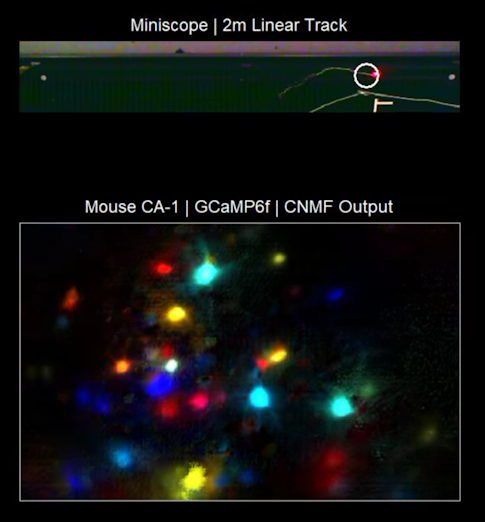
Born of frustration
Many open science efforts started with a moment of frustration similar to Chagas’. In 2013, Peyman Golshani, a neuroscientist at University of California, Los Angeles (UCLA), wanted to use small microscopes to image neural activity in freely moving rodents but thought the device’s price was unjustifiably high. So he formed a team with UCLA colleagues Alcino Silva and Baljit Khakh as well as then postdoctoral fellows Daniel Aharoni, still at UCLA, Tristan Shuman and Denise Cai, both now at Mount Sinai, to develop similar microscopes at a much lower price.
To develop their miniature scopes, the UCLA Miniscope team had to create a structure similar to that of a small company, including a team with diverse expertise in engineering, animal surgeries, data analysis and iterative and user experience testing. “Daniel would make it, we would break it, and then we would fix it together,” Cai says. “Just having an engineering or physics background wasn’t enough. We ultimately had to put it on a mouse and get a mouse to do stuff with it.”
After several years of development, the Miniscope team presented their work at the 2015 Society for Neuroscience meeting. Once the word was out that anyone could build their own microscope for just a few thousand dollars, the ‘Miniscope’ project took off. Now, the team has distributed more than 2,400 Miniscopes to more than 550 labs across the globe.
Attached to the head of a small animal like a mouse or rat, Miniscopes can observe neural activity during naturalistic behaviors such as foraging or during tasks where the animal is moving around. In 2016, the UCLA team published the first demonstration of the Miniscope at work, showing that the neural circuits that encode spatial memories are more intertwined for memories closer in time. Since then, many Miniscope users have modified the device for their own purposes or have added features. And the Miniscope team is now working on an even bigger endeavor: an open-source two-photon microscope.
Other open-source hardware projects are driven by the increasing complexity of neuroscience experiments and the need to specialize systems to do a particular function.
As a graduate student at MIT, Josh Siegle was frustrated with the capabilities of the tools around him. He wanted a more flexible electrophysiology system where he could integrate closed-loop feedback and implement his own algorithms, but most proprietary systems wouldn’t allow this. “Once you spend $100,000 on a data acquisition system, you’re locked into that vendor and you can only add new features that the vendor feels are profitable,” says Siegle, now a neuroscientist at the Allen Institute. “If you have open standards — even if the individual components are closed-source — you can still choose the best tools for any given job and you can disseminate your innovations more broadly.”
Around the same time, integrated amplifier chips from the company Intan Technologies came on the market, enabling amplification on a tiny chip rather than a large rack-mounted amplifier. Siegle teamed up with fellow graduate student Jakob Voigts, soon to launch his own lab at Janelia Research Campus, to develop a proof-of-principle design for a DIY electrophysiology system. Supported by their graduate student salaries as well as their respective advisors, Matt Wilson and Chris Moore, Siegle and Voigts were able to swiftly develop their systems and distribute them at cost. “We had no existing baggage or ‘not invented here’ syndrome that some established companies might have,” Voigts says. The acquisition system they developed ultimately became the first product of Open Ephys, an online resource and corresponding production site that now distributes designs for many additional elements of electrophysiology rigs, from the recording devices themselves to the acquisition software.
For researchers choosing between building an electrophysiology rig from scratch, paying for a commercial system (about $36,000) or buying an Open Ephys starter kit (about $6,600), the most efficient and cost-effective solution is clear. More than a hundred labs from Cape Town, South Africa, to Fukui, Japan, have Open Ephys systems, and several hundred publications report using it.
Although Open Ephys originated from a moment of frustration, Siegle and Voigts now see their system and others like it through the lens of efficiency. Siegle hopes that tools like Open Ephys can reduce the number of hours trainees spend doing trivial but time-consuming tasks that aren’t directly related to their experiments. “For me, it comes down to looking at the daily life of a grad student or postdoc and seeing how much time is spent writing really hacky code and taping things together and waiting for epoxy to dry,” Siegle says. “There are so many little tasks that are required to get experiments to work.”
As with the Miniscope, many users are modifying Open Ephys hardware and software for their own needs, often making crucial but underappreciated improvements. Figuring out how to give proper professional recognition to individuals who contribute to these open source projects may provide an incentive for users to modify existing projects rather than recreate their own. “These projects live and die by people’s contributions,” Voigts says. Many open source projects like Open Ephys are tracking changes via GitHub in order to generate a digital trail for contributions.
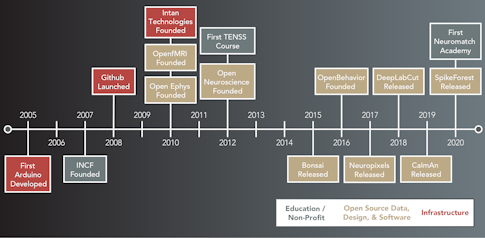
An opening landscape for collaboration
Early open science projects, such as Miniscope and Open Ephys, were often a labor of love on the part of their creators, an accessory rather than central part of their funded research. The traditional funding landscape for neuroscience had not been set up to reward these types of community-focused efforts. That’s beginning to change, however. The NIH BRAIN Initiative’s 2025 report, which outlines the program’s future focus, explicitly notes that BRAIN-funded technologies should be easily and affordably available to the broader community.
New models for funding large scientific collaborations are emerging. Neuropixels probes, considered one of the biggest recent advances in electrophysiology, began as a project in 2008 by Tim Harris, an analytical chemist turned engineer at Janelia Research Campus. Harris knew from the start the project would require a different funding approach. Working for multiple venture-funded biotechnology companies had shown him that research technologies couldn’t turn huge profit margins. “If you want to develop research tools, don’t try to make a profit,” Harris says. “Instead, figure out how to fund it so that it can be provided at cost to research organizations.”
Because Neuropixels probes rely on silicon fabrication, they cost millions of dollars – more than the operating budget of any single lab – to develop and manufacture. Knowing that the project, though costly and risky, had the potential to transform neuroscience, a handful of nonprofit agencies — Janelia, the Allen Institute, the Wellcome Trust and the Gatsby Foundation at University College London — committed $5.5 million in support in 2013. “The democratization of these technologies is in large part because of absolute generosity of private supporters,” Harris says. “They were willing to stick their necks out for millions of dollars because we were clearly under capacity in what we needed to measure.”
Labs can now buy Neuropixels probes at cost — at this point, more than 5000 Neuropixels 1.0 probes have been shipped to more than 350 labs.
Other efforts are focused on developing software for common analysis problems in neuroscience, such as image processing and spike sorting, ideally eliminating the proliferation of redundant hacky code. For example, the Flatiron Institute has developed CaImAn, a tool for processing two-photon imaging data, and SpikeForest, a tool for assessing spike sorting accuracy of extracellular electrophysiology data.
Siegle and Voigts also developed open-source software for collecting and analyzing extracellular electrophysiology data. The utility of this software, as well as their acquisition system, is that it works with a variety of different recording devices — from four-channel wire electrodes to 384-channel silicon-based Neuropixels probes.
Open-source designs almost always cost less than their proprietary counterparts, and many software packages, including CaImAn, SpikeForest and DeepLabCut, a common solution for animal behavioral tracking, are completely free. The site built by Chagas, Open Neuroscience, as well as others, such as OpenBehavior, provide a centralized outlet for open-source projects, aiming to save individual researchers the need to develop their own makeshift solutions.
Even for well-funded projects like Neuropixels, creating a culture of openness and collaboration is key. “It starts with an attitude,” Harris says. Harris spent 18 years at Bell Labs, which is known for its research and development of large, risky projects. The same open approach to large-scale collaboration clearly defines his leadership with the Neuropixels probes and will hopefully influence future similarly large-scale collaborations.
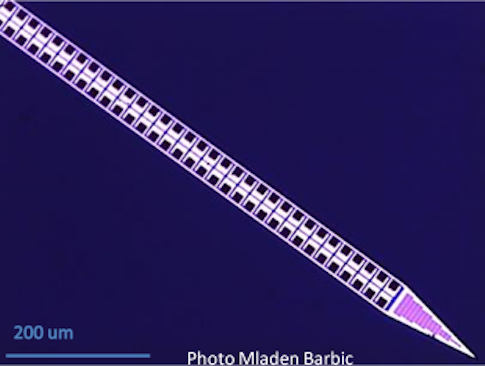
Teaching others what’s under the hood
Of course, simply developing an open-access tool isn’t enough. Such tools are only successful if the community puts them to use. The Miniscope team spends a tremendous amount of time developing tutorials and a comprehensive wiki, as well as teaching workshops for researchers who are building and using their scopes. Even from the early days of development, the team decided that providing these resources to the community was just as important as designing a fancy tool. “The workshop really demystified the process for a lot of people,” Cai says. “People would come in intimidated, but within a few hours would build their own microscope from scratch. They’d have this ‘aha moment’ like ‘oh, I can totally do this.”
Looking under the hood — and explaining what’s there — is a key component for successful open-source movements. The Transylvanian Experimental Neuroscience School (TENSS) has built an entire course around this concept. Set in the unlikely locale of Pike Lake in Romania, students deconstruct a two-photon microscope.
Like many great ideas in the history of science, TENSS was born over a couple of drinks — this time, at a party hosted by the Ministry of Education and Research in Bucharest, Romania. It was 2010, and Florin Albeanu, now a neuroscientist at Cold Spring Harbor Laboratory (CSHL), pitched the idea of an open, flexible course about neuroscience methods to Raul Muresan, now a neuroscientist at the Transylvanian Institute of Neuroscience. Most importantly, the course would take place in the middle of their home country.
At the time, Muresan was in Romania founding a neuroscientist institute from scratch after completing his postdoctoral fellowship in Germany. Like Chagas, he immediately saw the difference between his high-powered postdoctoral lab and the lack of resources in his home country. Biological research was almost completely eradicated during Romania’s decades under Communist leadership and has been rebuilding ever since. “I didn’t even have money to build an electrophysiology rig,” Muresan says.
Unable to outfit his lab with the commercial tools he had used in Germany, Muresan needed to find cheaper alternatives. But he wasn’t sure how. Albeanu convinced him that they could build such rigs with less-expensive, open-access designs. Although Muresan was originally skeptical that he could build his lab — better yet an entire school — in this way, the pair started planning a summer course based on open science principles.
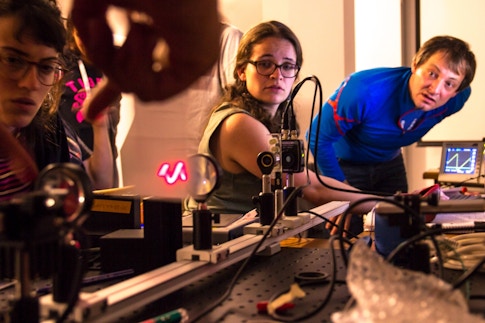
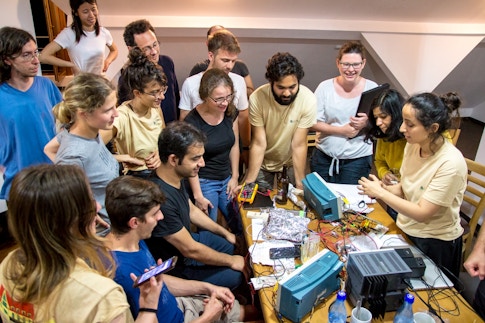
In the early days, TENSS faced numerous logistical concerns. Shipping materials to Transylvania was challenging — even basic parts like screws were embargoed. Importing lasers for imaging rigs required clearance from NATO that they wouldn’t be used for military purposes. Albeanu and Muresan tackled these problems one by one, and TENSS became a reality in the summer of 2012. (The Simons Collaboration on the Global Brain helps fund the course.)
Over the eight years that TENSS has been running, the organizers have come to see the lack of fancy technology at their course as a feature, not a flaw. “You don’t want to be in a place where everything works — you don’t learn this way,” says Adam Kampff, an investigator at University College London who first met Albeanu at a CSHL imaging course in the mid 2000s and joined the TENSS organizing team in 2014. “You learn by being in a place where you have a lot of knowledge and just barely enough stuff, and you have to construct the understanding yourself, along with building the tools.”
“Technology is not limiting — what’s limiting is how we think about how the brain works,” Albeanu says. “Once you realize that this is the case, that you can use any tools at your disposal as long as you understand how the brain works — that’s empowering.” After three weeks, TENSS participants return to their home labs with a deeper and different understanding of the tools around them and the process of science.
TENNS’ collaborative spirit is spreading. The Transylvanian Institute of Neuroscience was founded in 2017 with the same principles of open science. “Without the school [TENSS] and all of the knowledgeable people that it had created, without the hardware to make it run, the institute wouldn’t have been born,” says Muresan.
The TENSS blueprint is also being emulated in places such as South America and India, where a former teaching assistant is building a similar school. Parallel efforts such as the Open Labware workshops run by TReND in Africa, which Chagas co-organizes as a volunteer, are also gaining significant traction. Each of these efforts have benefitted from being democratic organizations embedded in a culture of contribution and openness and have built their own grassroots momentum that continues to ripple through the field. “Even if you tried to stop it, you couldn’t,” Muresan says.


